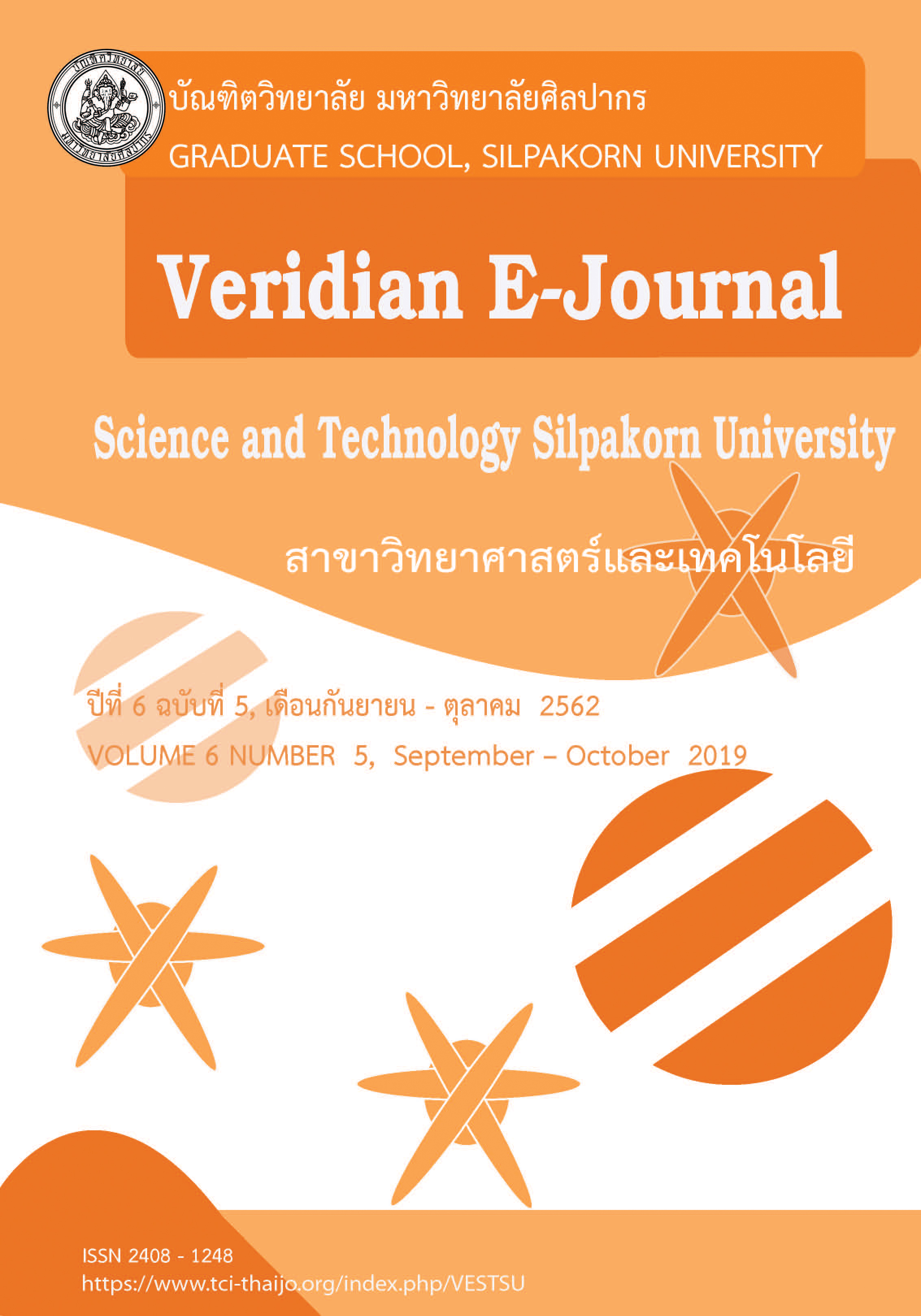การวิเคราะห์สารฟลาโวนไกลโคไซด์ในสารสกัดจากใบไผ่ซางหม่น “นวลราชินี” ด้วยเทคนิค TLC และ HPLC (Determination of flavone C-glycosides in bamboo leaf extract of Pai Sang Mon "Nuan Rajinee" using TLC and HPLC techniques)
Main Article Content
Abstract
ไผ่ เป็นพืชที่ถูกนำมาใช้ประโยชน์ได้หลายด้าน ใบของไผ่มีสารพฤกษเคมีที่มีฤทธิ์ต้านอนุมูลอิสระสูง เช่น สารประกอบฟีนอลิก และฟลาโวนอยด์ ไผ่ซางหม่น “นวลราชินี” (Dendrocalamus sericeus Munro.) เป็นไผ่อีกชนิดหนึ่งที่นิยมปลูกในประเทศไทยเพื่อใช้ส่วนของลำต้น แต่ส่วนของใบที่เหลือทิ้งยังไม่มีการศึกษาการนำไปใช้ประโยชน์มากนัก อีกทั้งอายุของใบไผ่อาจมีผลต่อปริมาณของสารสำคัญ ดังนั้น งานวิจัยนี้จึงมีวัตถุประสงค์เพื่อศึกษาปริมาณสารประกอบพีนอลิกรวม และปริมาณสารฟลาโวนอยด์รวมในใบไผ่ซางหม่นที่มีอายุแตกต่างกัน รวมถึงวิเคราะห์ชนิดของสารฟลาโวนอยด์ด้วยเทคนิค Thin-layer Chromatography (TLC) และเทคนิค High performance liquid chromatography (HPLC) ผลการทดลองพบว่าสารสกัดจากใบแก่ มีปริมาณสารประกอบฟีนอลิกรวม และสารฟลาโวนอยด์รวมสูงสุดอย่างมีนัยสำคัญ เท่ากับ 4.694 ± 0.196 mg GAE/g DW และ 26.768 ± 0.826 mM QE/g DW ตามลำดับ รองลงมาคือใบกลาง และใบอ่อน ตามลำดับ และใบไผ่ซางหม่นมีสารประกอบฟลาโวนอยด์กลุ่มฟลาโวนไกลโคไซด์ ได้แก่ isoorientin, orientin, isovitexin และ vitexin เป็นองค์ประกอบ โดยพบสาร isoorientin มากที่สุด รองลงมาคือ orientin, vitexin และ isovitexin ตามลำดับ แสดงให้เห็นว่าใบของไผ่ซางหม่นอาจนำไปพัฒนาเป็นผลิตภัณฑ์ทางสุขภาพเพื่อให้มีมูลค่าสูงขึ้นได้
Bamboo is a plant with multifunctional uses. Leaves of bamboos also contain phytochemical substances with high antioxidant activity, such as phenolic compounds and flavonoid compound. Pai Sang Mon "Nuan Rajinee" (Dendrocalamus sericeus Munro.) is one of commercial trait grown in Thailand for utilize the stem but the uses of bamboo leaves were not yet clearly studied. The age of bamboo leaves may also affect the amount of important substances. Therefore, this research aimed to study total phenolic and total flavonoids contents in bamboo leaves at different ages and identified the type of flavonoids using thin-layer chromatography (TLC) and high performance liquid chromatography (HPLC) technique. The results showed that the extract from old leaves contained the highest total phenolic and flavonoid contents, followed by middle leaves and young leaves. The total phenolic content and total flavonoid content in the old leaves were 4.694 ± 0.196 mg GAE/g DW and 26.768 ± 0.826 mM QE/g DW, respectively. HPLC analysis showed that bamboo leaves compose of flavone C-glycosides such as isoorientin, orientin, isovitexin and vitexin in which isoorientin had the highest content and followed by orientin, vitexin and isovitexin, respectively. The results suggested that leaves of Pai Sang Mon may be used to develop into health products for higher value.

